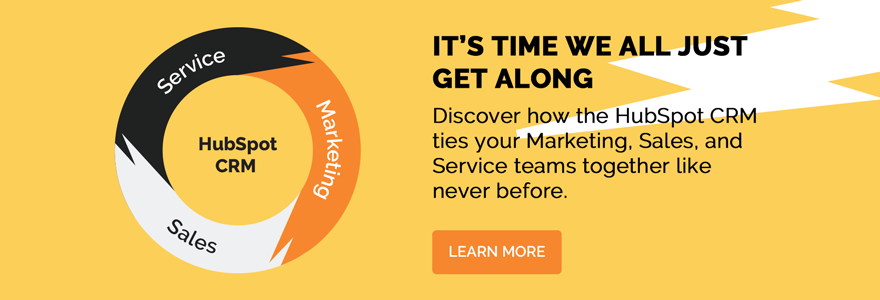12 Sales KPIs You Need to Measure in 2020
Are you looking for new key performance indicators (KPI) to track your sales metrics? While some KPIs that you’re familiar with may still work in 2020, we have a comprehensive list to help you analyze your data, evaluate your business, and improve your overall sales efficiency this year.
1. Qualified Leads and Opportunities
Sales managers will want to consistently monitor how their sales staff are contributing to business expansion if quotas are being reached, and what percentage of teams are hitting their targets. By sharing this data, sales reps can see how they compare with each other, share tactics that work, and provide motivation to reach group goals.
To evaluate leads, it’s important to understand the difference between Marketing Qualified Leads (MQLs) and Sales Qualified Leads (SQLs), since they refer to different lifecycle stages. MQLs are identified as being deeply engaged but have not become full opportunities. SQLs are further vetted and are identified as a prospect that’s ready to make a decision.
2. Customer Acquisition Rates
Measure customer acquisition rates to review how many prospects are converted to customers, discover if there are large discrepancies between sales reps, and identify what customers prefer in-person contact compared to cold-calling. If conversions decrease after a certain number of touches, a number can be identified as a benchmark so that sales reps aren’t overworking themselves for a lost cause.
3. Sales Volume by Location
Compare sales volumes across locations, in physical stores and through online transactions, to evaluate the demand for your product or service. If demand is higher in a certain area, you can improve sales pipeline strategies for customers in that region to buy more of what they like. For demand in low regions, you can implement promotions, discounts, or samples to drive sales activities.
4. Track Prices of the Competition
Be aware of what the competition is doing to help you manage your pricing and strategy. While price matching might guarantee your customers the lowest prices, you can also train your sales staff to give reasons why your products or services deserve to be valued higher. If you manage a business that negotiates prices with other businesses, you have an opportunity to offer competitive pricing for a larger order or long-term contract.
One way to evaluate your competition is to calculate the Price Index. The Price Index is a normalized average of price relatives for a particular category of products or services in a specific geographical region for a given time period. Although research is needed to find values to calculate the Price Index, data can easily be stored in spreadsheets to help with analysis.
5. Engagement with Existing Clients
Manage relationships with customers after the sale for long-term success. Sales managers that build trust with their clients can better understand their needs, consistently recommend useful new products, and keep them happy.
In order to keep accurate data in your sales metrics, ask your salespeople to keep track of their interactions with each of their customers. By comparing the number of times their clients are in contact, comparisons can be made to how fast responses are needed, what common concerns there are, and what the cycle is like for your team to build quality relationships.
6. Satisfaction of Your Team
Keeping sales reps motivated and in sync are challenging tasks for any manager. KPIs that measure employee feedback can help communicate job satisfaction if workloads are too difficult, or even the performance of the management team. Evaluating how employees feel about their job can help keep the company culture healthy and overall goals aligned.
7. The Benefit of Net Promoter Score (NPS)
NPS is a survey that measures the likelihood of how willing a customer is to recommend a product or service to someone else. When this type of survey is conducted, participants are asked to rank the likelihood of a recommendation on a scale of 0-10.
NPS rankings are divided into three categories:
- Promoters – ratings of 9 to 10, these customers are likely to renew and will recommend you to friends or colleagues
- Passives – ratings of 7 to 8, these customers are satisfied
- Detractors – ratings of 0-6, these customers don’t like you and might tell others to avoid your product or service
The questions in your survey depend on your business and goals. To calculate your overall score, simply subtract the percentage of detractors from the percentage of promoters.
8. Typical Length of the Sales Cycle
Review the average length of the sales cycle to help you discover if some reps close in less time, what their churn rates are in relation to onboarding, and what sales cycle length produces the highest number of closed deals. Analyzing the sales cycles applicable to your business can help you determine how to improve performance sales and follow through with positive action.
9. Acceptance Rates
Consistently landing appointment acceptances is usually correlated with a sales rep creating a sense of urgency with their clients, and prioritizing your product or service in their schedules. To calculate this rate, simply divide the number of meetings that a client has with your sales rep by the number of replies that they receive. This KPI can help you understand your reps' sales techniques, the effectiveness of your sales training processes, and help you apply successful strategies company-wide.
10. Customer Lifetime Value (CLV) for Each Customer
CLV is the total revenue a business can reasonably expect from a single customer account. It's a crucial KPI used to determine which customer segments will drive the most revenue for a company.
A high CLV average demonstrates that an account manager is actively involved with their clients. It also shows that as time goes on, the account manager can keep clients loyal to your business because of the relationship that they’ve built. CLV is a valuable KPI to evaluate an account managers' overall performance.
11. Social Selling Index (SSI)
The SSI refers to any sales activity happening through social media, such as LinkedIn. SSI measures the four elements of successful social selling, which include:
- Branding – monitor profiles of sales reps, and their ability to add valuable content
- Connectivity – target prospective clients and managing existing connections
- Insights – stay in touch with your industry
- Building relationships – follow up with clients through any social media means
SSI is an easy KPI to track, especially if you want to maximize your conversions at each stage of the sales process.
12. Sales Funnels
It is important to evaluate and understand how long it takes for your sales team to convert a prospect into an existing customer. Track the number of quality leads, sales rep response time, and close rate to identify how smooth your sales cycle is. Monitor the performance of your sales team to identify any bottlenecks in the process and eliminate them to reach your targets.
Outsource Your Work with ThinkFuel Marketing
ThinkFuel Marketing delivers sales automation, lead generation, and digital marketing services for B2B companies across North America.
We help sales managers empower their sales team to sell at a higher velocity, and we can help your business too. We provide software, process and content that aligns with your sales goals. Tools like automated prospecting email sequences, templates, document tracking, and more help drive efficiency throughout your entire sales process.
Contact us today to schedule a consultation, and grow your B2B business with ThinkFuel Marketing.
Table of contents
Share this
You May Also Like
These Related Stories

What Are the Most Successful Lead Nurturing Tools?

How to Define Your Sales Funnel Stages: A Complete Guide




